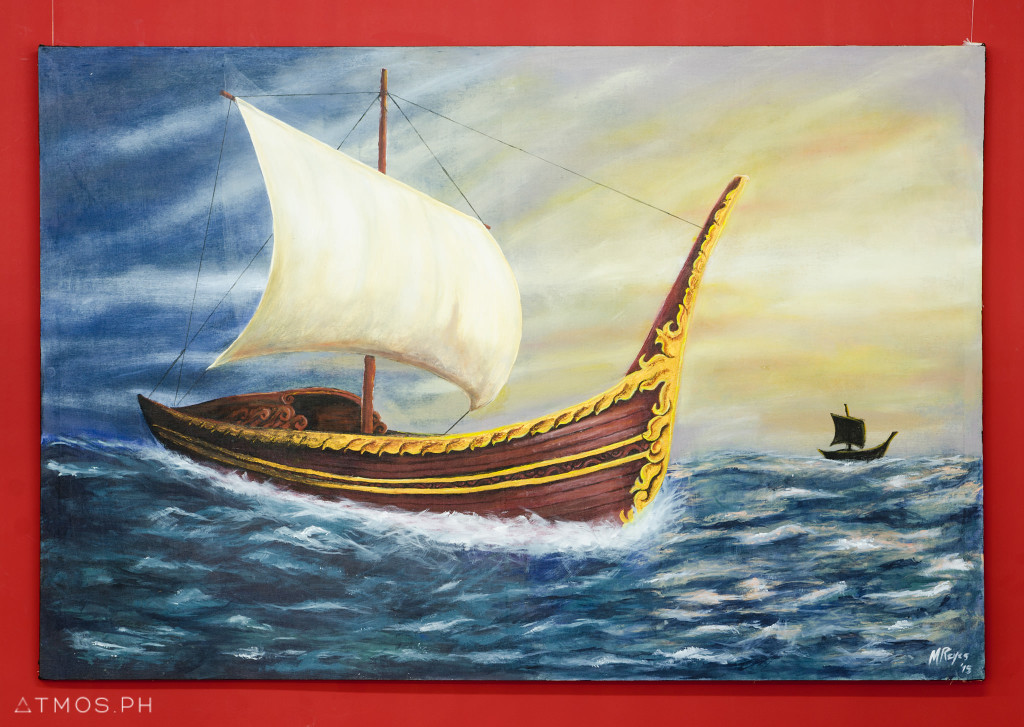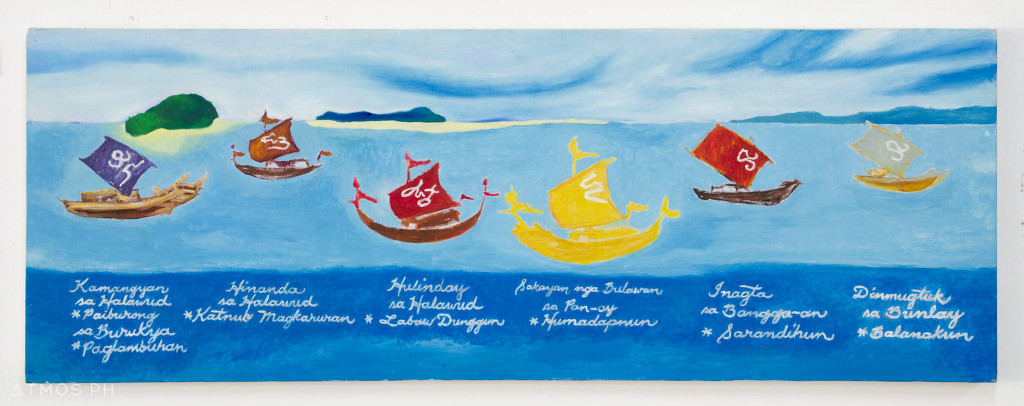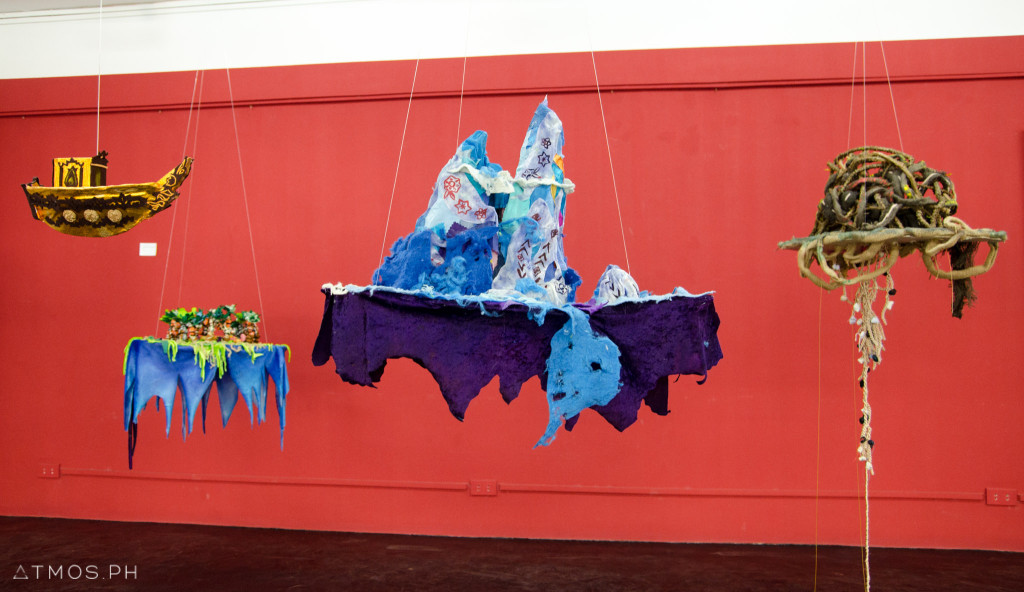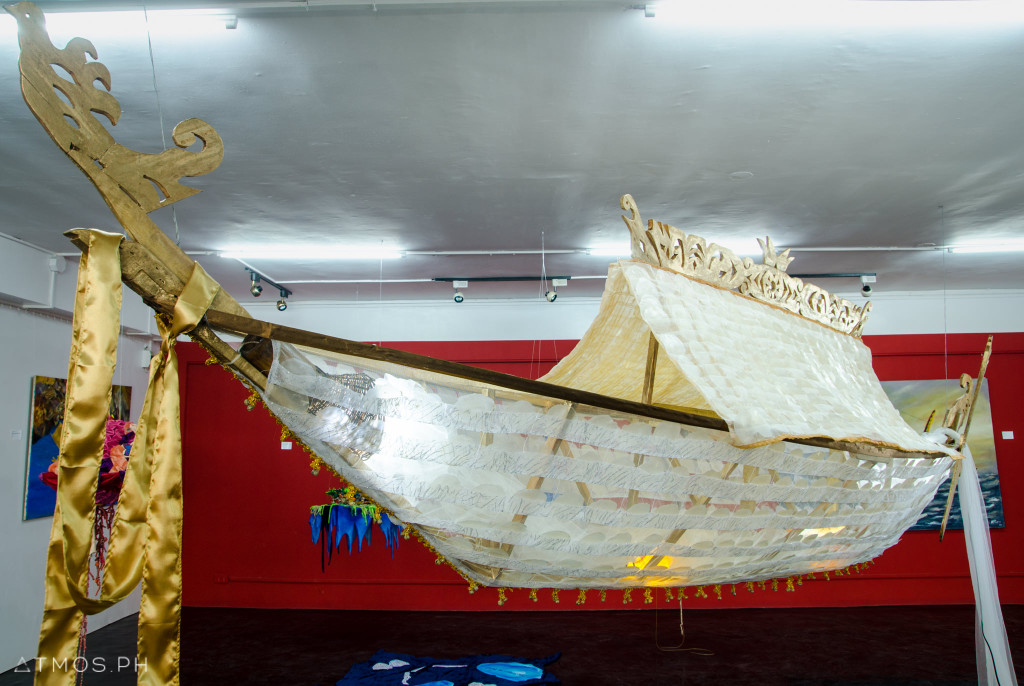
Ma. Rosalie Zerrudo made an installation of a flying barangay chandelier made of capiz shells ‘lampirong’ with ‘okir’ wood cuts inspired from the Panay panubok indigenous embroidery designs such as ‘punay, pako, bulak, togi, minagkal motif in the use of lines.
Philippines being an island archipelago use its waters as navigational artery that pumps vibrant migrations to its shores. The sea dancing vessels come in many forms and names, such as biday used by the Borneian Datus who landed in Panay, Lepa with exemplary okir wood carving for the Sama D’Laut better known as Badjau, balangay or balanghai for the early sea-faring people of Butuan, barangay for the Panay Bukidnon Sugidanun epic. Other Southeast Asian countries have their own version. “There is the tatara for Taiwan, the lepa for Malaysia and perahu for Indonesia“ (Valdez 2009).
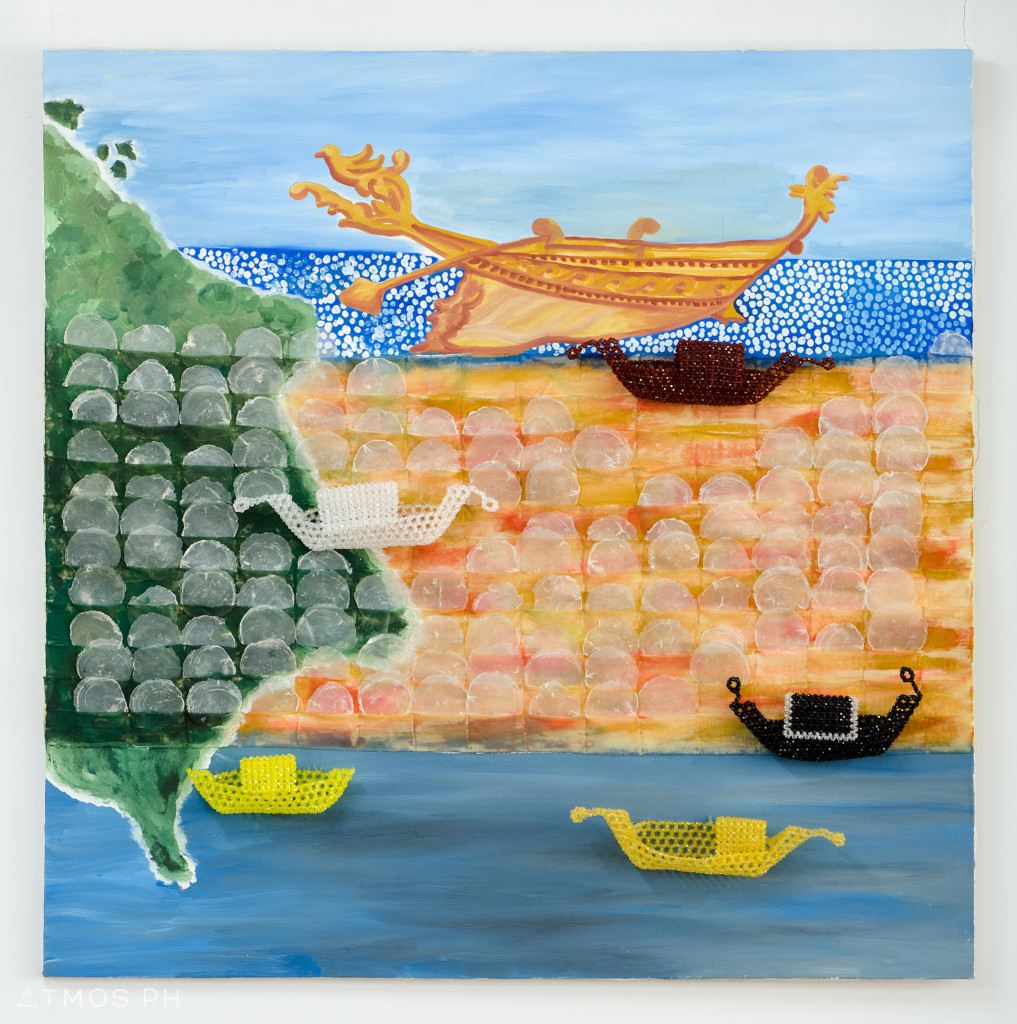
A mix-media piece by Zerrudo manipulated the use of cloth, shells, beads to create a landscape depicting the ‘pagdungka’ arrival of the six barangays.
The islands are treacherous that calls for adventurous people such as seafarers. “Early Filipinos were a people of the sea, living in coastal villages or near rivers. Boats were linked to many aspects of Filipino life: fishing, trade, warfare, “piracy” (trade-raiding for goods and slaves), travel, communication, and dwelling. The Butuan Boats (Balangay) represent an important part of the understanding of Southeast Asian shipbuilding technology.” (Dizon 2009) The barangay connected the islands from Butuan to Borneo to Panay.
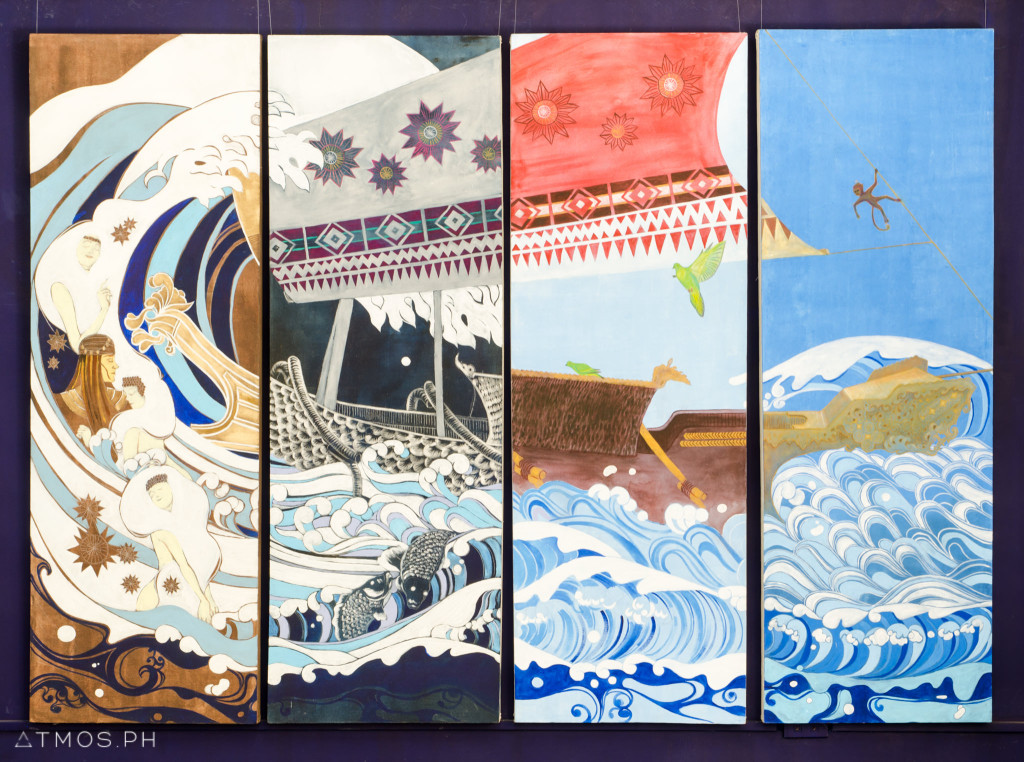
Margarita Chavez and Noel Epalan created a dramatic four piece puzzle of a barangay making each panel a distinct interpretation of a mythological feature of four different barangays from left to right sakayan nga bulawan, dinmugtok, inagta and kamangyan.
The barangay exhibit bring to life the Sugidanun constructs into real space in redefining material culture that traversed through the archipelagic memory. The exhibition launches the Barangay to shore; the Kamangyan; Inagta; Sakayan nga Bulawan; Hinanda; Dinmugtuk; and Hulinday. The artists are Fine Arts teachers of the University of San Agustin Iloilo; Margarita Chavez, Noel Epalan Jr., Liby Norman Limoso, Mia Reyes, Yannie Rose Noble-Tuazon and Ma. Rosalie Zerrudo
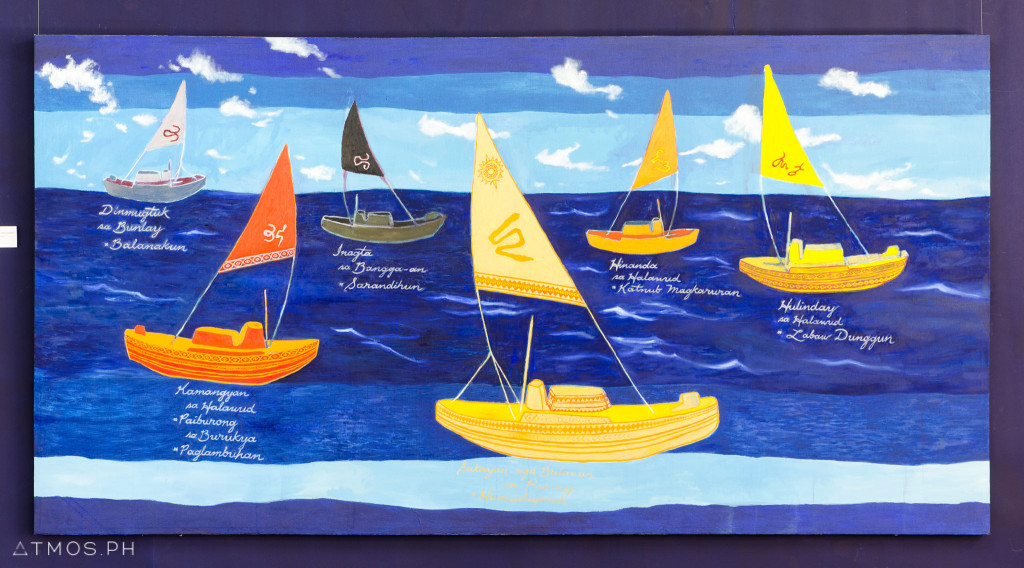
Liby Norman Limoso juxtaposed the six barangay with indigenous labels on one canvass as an interpretation of the wood carved by Leopoldo Caballero, one of the chanter as his own appropriation of the mythological vessel described in the Sugidanun.
These names are the owners of Barangay: KAMANGYAN-Paiburong gin-agaw ni Paglambuhan sa Burukya, INAGTA-Sarandihun kag Labaw Dunngun sa Bangga-an. HULINDAY-Labaw Dunggun sa Halawod, DINMUGTUK-Patugasnun kag Balanakun sa Bunlay, BULAWAN-Burulakaw kag Humadapnun sa Pan-ay.
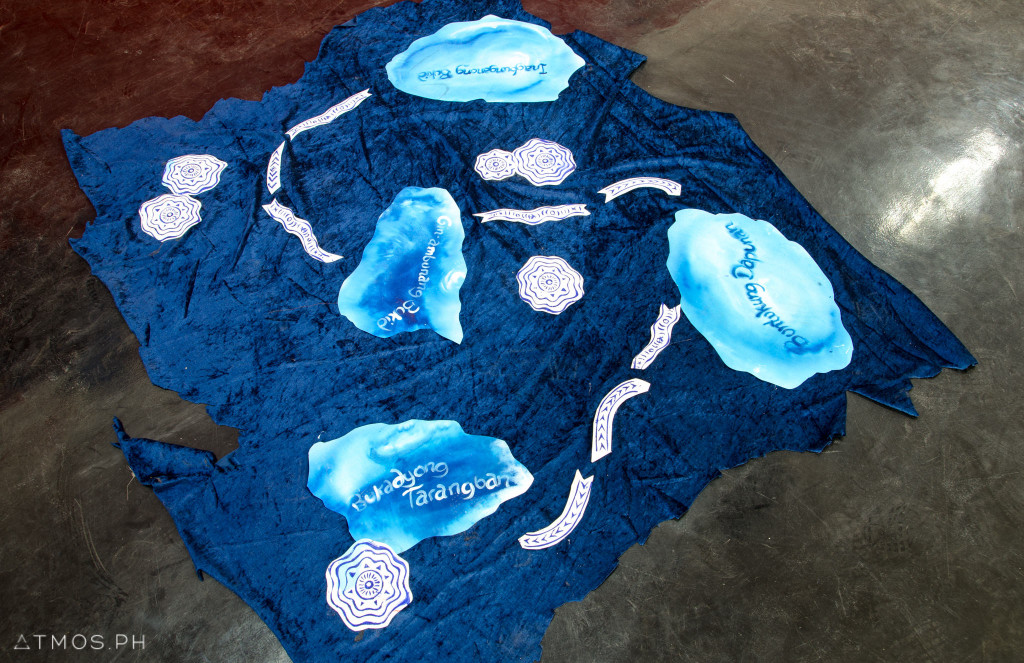
Yannie Rose Noble – Tuazon played with different textures in bright colors using various textures, soft sculptures, vines, and textile as she reconstruct the adventures and misadventures of the man of gold ‘Humadapnun’ from the middle world and underworld described in archaic Kinaray-a language as bukadyong tarangban, buntukung dapunan, inagbunganung bukid, gin-ambunang bukid.
The artists engaged in mix-media, installations, oil and acrylic on canvass, soft sculptures and textile variables in reconstructing the intangible myth to a tangible construct. Artworks make the absent, present; the invisible, visible.
Mga Barangay sa Sugidanun ka Panay
9 December 2015 – 31 January 2016
ARTDECK Gallery
John B. Lacson Maritime Foundation University
Molo, Iloilo City
Monday – Friday, 9 am – 6 pm
Free Admission

